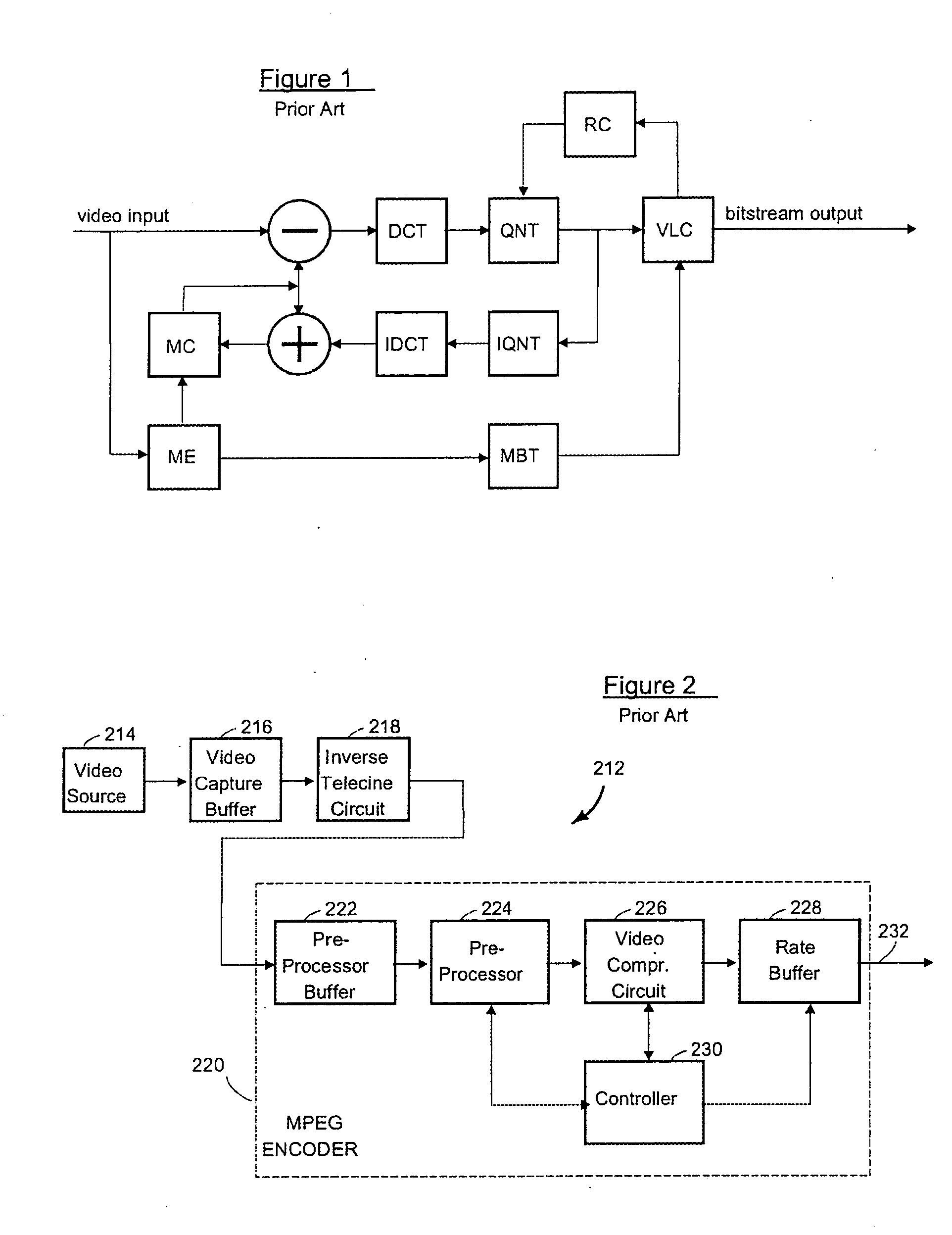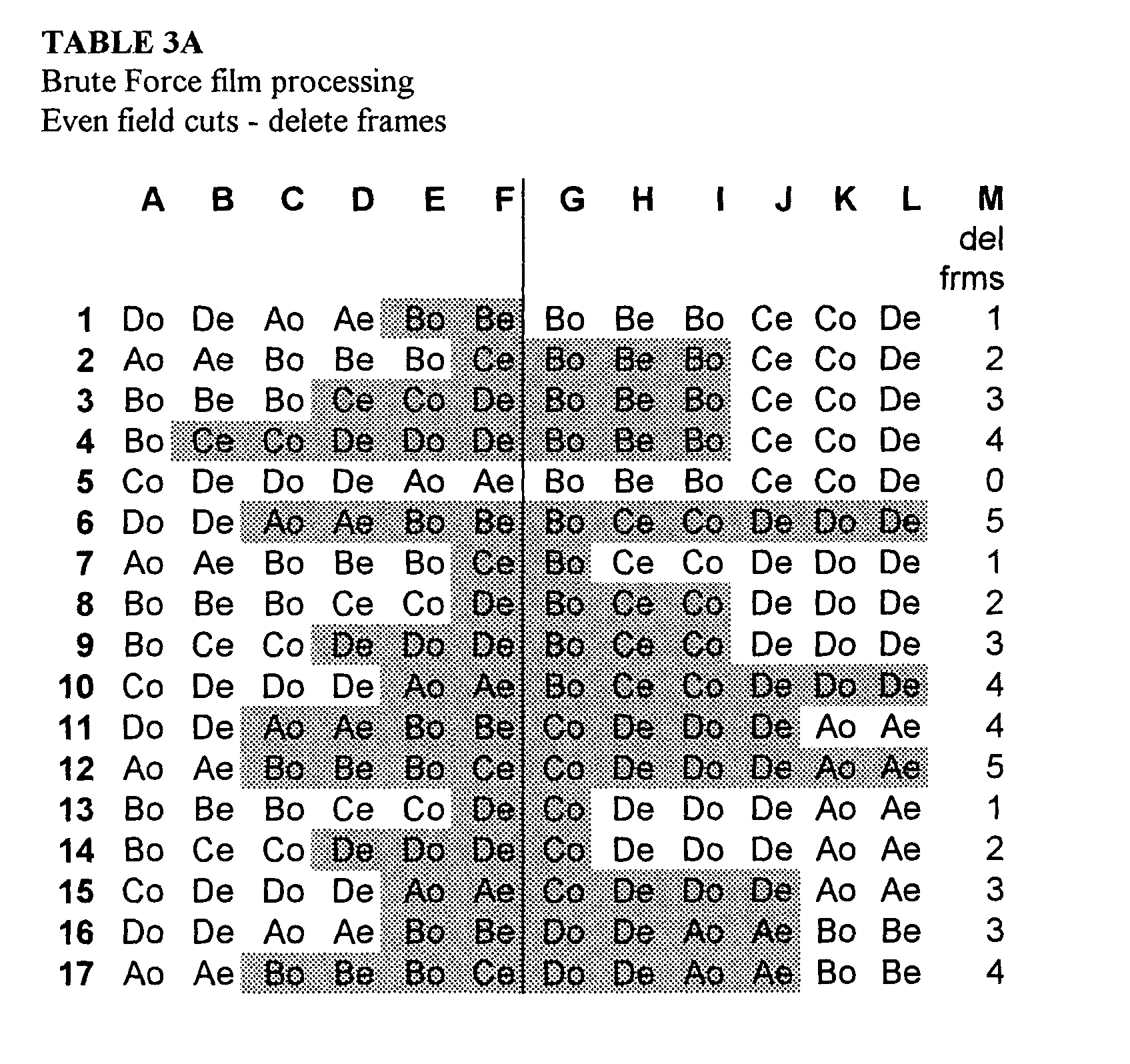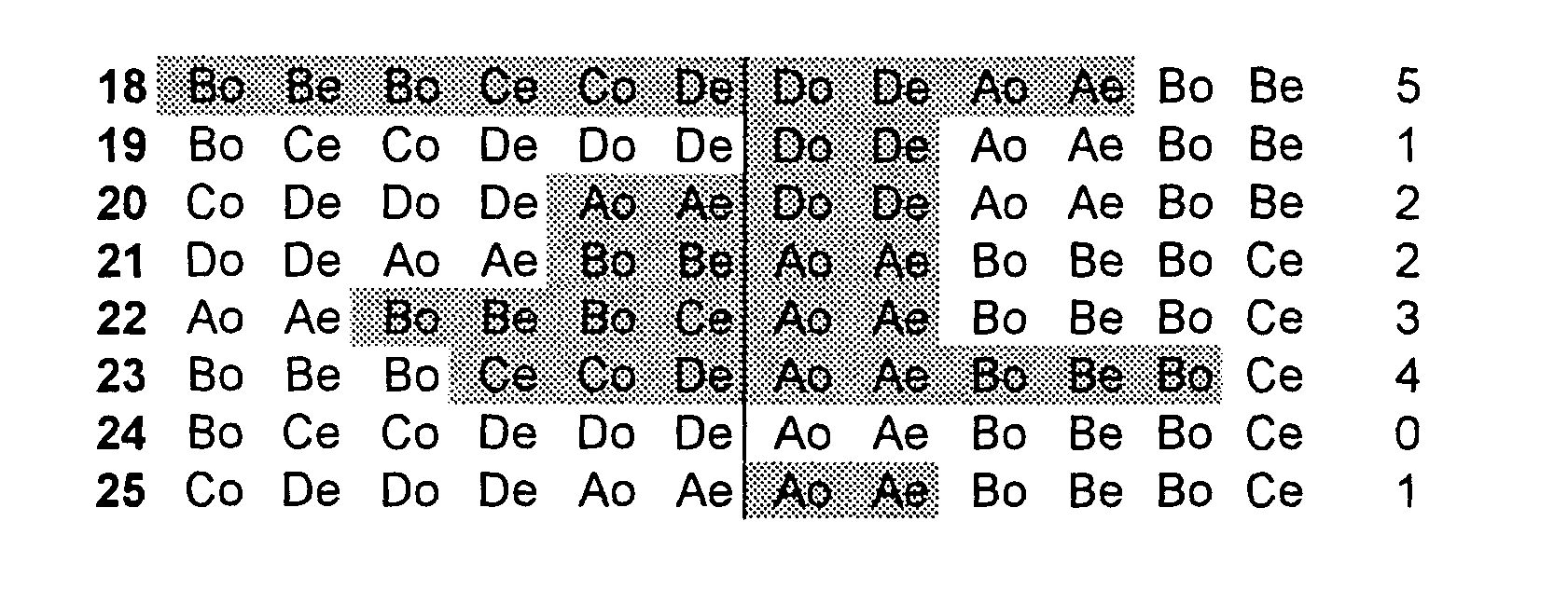Maintaining continuous film mode with bad edits
a continuous film mode and editing technology, applied in the field of video signal processing, can solve the problems of spliced video sequence not maintaining the prescribed 3:2 pull-down sequence, mpeg-2 encoder to drop, bad edit, etc., and achieve the effect of reducing compression efficiency
- Summary
- Abstract
- Description
- Claims
- Application Information
AI Technical Summary
Benefits of technology
Problems solved by technology
Method used
Image
Examples
Embodiment Construction
All input sequences referred to herein are assumed to be legal NTSC video, where each frame (“A”, “B”, “C”, “D”) has 2 fields (“o” and “e”), so it is illegal for the input to have 2 consecutive odd (o) fields or 2 consecutive even (e) fields—this would result in a synchronization loss and synchronization would have to be restored.
The Tables (3A, 3B, 4A, 4B), presented hereinbelow, do not show the repeat_first_field and top_field_first flags. These flags are tied to the letters (A, B, C, D), as follows. Referring to the following Table, each frame type (A-D) has a specific flag setting associate to it. For example when the Table shows a B frame (Bo, Be, Bo′), that frame will always have top_field_first set and repeat_first_field set.
TABLE 2MPEG-2 flagsLettertop_field_firstrepeat_first_fieldA10B11C00D01
It should be noted that, in the Tables, the prime symbol (e.g., Bo′, Do′) is not used to indicate a repeat frame. Repeat frames will be evident from the context.
In the descripti...
PUM
| Property | Measurement | Unit |
|---|---|---|
| min-width | aaaaa | aaaaa |
| max-width | aaaaa | aaaaa |
| length | aaaaa | aaaaa |
Abstract
Description
Claims
Application Information
 Login to View More
Login to View More - R&D
- Intellectual Property
- Life Sciences
- Materials
- Tech Scout
- Unparalleled Data Quality
- Higher Quality Content
- 60% Fewer Hallucinations
Browse by: Latest US Patents, China's latest patents, Technical Efficacy Thesaurus, Application Domain, Technology Topic, Popular Technical Reports.
© 2025 PatSnap. All rights reserved.Legal|Privacy policy|Modern Slavery Act Transparency Statement|Sitemap|About US| Contact US: help@patsnap.com



